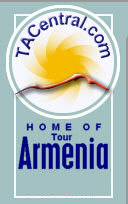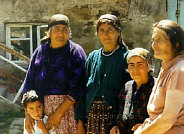Yezidis belong to the Kurdish race and are regarded by Kurds as those who keep their original religion. They speak a northern dialect of Kurdish (Kurmanji). Except for a few Arabic poems, all religious texts are in Kurmanji, including their hymns (qewl). All Scriptures and texts that they have are also in Kurdish.
Scholars believe that the Yezidis' religion is one of the last surviving offshoots of a faith even older then Judaism or Zoroastrianism, and which it heavily influenced.
Known as "the cult of the angels", this early Indo-European faith held that there was only one God but that he created seven angels to serve him. Chief among these, for Yezidis, is the fallen angel who disobeyed his maker.
As a result, outsiders have labeed Yezidiz "devil worshippers". despite the fact that yezidis believe that the flalen angel was rehabilited and welcomed back into God's presence. Allegations of devil worship have dogged the Yezidis for at least 1000 years. While most of their fellow Kurds converted to Sunni Islam centuries ago, the Yezidis have preserved the essence of their ancient faith despite successive waves of religious persecution.
In fact Yezidism has two main books of revelation, written 1000 years ago and attributed to a certain Sheik Adi Musafir and his son, considered the founders of the cult. The community maintains a strict caste system and three orders of priesthood, headed by the spiritual leader known as the Bab el-Sheik.
Sheik Adi, was himself a member of a wandering order of Muslim Sufi mystics. His burial place at Lalish, a lush and beautiful valley north of Shekhen in Iraq, is the faith's main temple, part of a complex of shrines that are a place of pilgrimage for Yezidis.
In Armenia, Yezidis are predominantly a pastoral community, with villages concentrated in the central highlands and along alpine meadows in the upper elevations of the country. Yezidis adhere to a distinct religion that is influenced by Zoroastrian beliefs, Christianity and Islam. Though the language spoken by Yesdis is Kurdish, they tend to regard themselves as distinct from Kurds.
The community is very shy, though children love to gawk at visitors and have their picture taken. Yezidi shepherds make annual migrations in the spring to the upper elevations of mountains, camping in caravan-style tents and tending their sheep and goat flocks until the first snows of the autumn, when they return to their villages. The wool and mohair from these flocks can be compared to the best in Ireland, with a smooth and resilient fleece.
Several villages are located on the highway between Ashtarak and Aparan, their graveyards detected by peaked roofs built over the graves. At the village of Kuchak (near Aparan in Aragatsotn District), a 10th century Yesdi graveyard lies next to the road, about 20 small stone horses. No more than 2 feet high, the horses resemble stone horses found from the Hsia Dynasty in China, or Mongolian monument stones from the medieval period.
More Information
The following is from the Idependent, "Hell's Angels":
The Yezidi sound like the stuff of legend, or 19th-century novels - a people who live in the remote mountains at the borders of Turkey and Iraq, and pray to the fallen angel Christians and Muslims call Satan, because they believe he was forgiven by God and reinstated in heaven.
The Yezidi never wear the colour blue. They are not allowed to eat lettuce. They do not believe in heaven or hell -- instead they believe in reincarnation, which they call the soul "changing its clothes". They have two holy books, but they believe the only copy of one of them, the Black Book, was stolen years ago and taken to Britain, where, they say, it is kept in a museum.
They have kept their religion alive through oral tradition. Yezidis known as Talkers can recite the entire lost book from memory. They are taught it as children by their fathers, and teach it to their own sons in their turn.
The Yezidi believe that after man’s creation, God ordered the angels to pray for Adam, but that one angel refused - there is a similar belief in Islam. But the Yezidi believe that instead of becoming the fallen Satan, the recalcitrant angel was forgiven by God. They do not call this angel Satan - they will not say the word, and are deeply offended by it -- but Malek Tawwus, or the Peacock King, and they pray to him. As a result, the followers of other religions have condemned them as Devil-worshippers.




